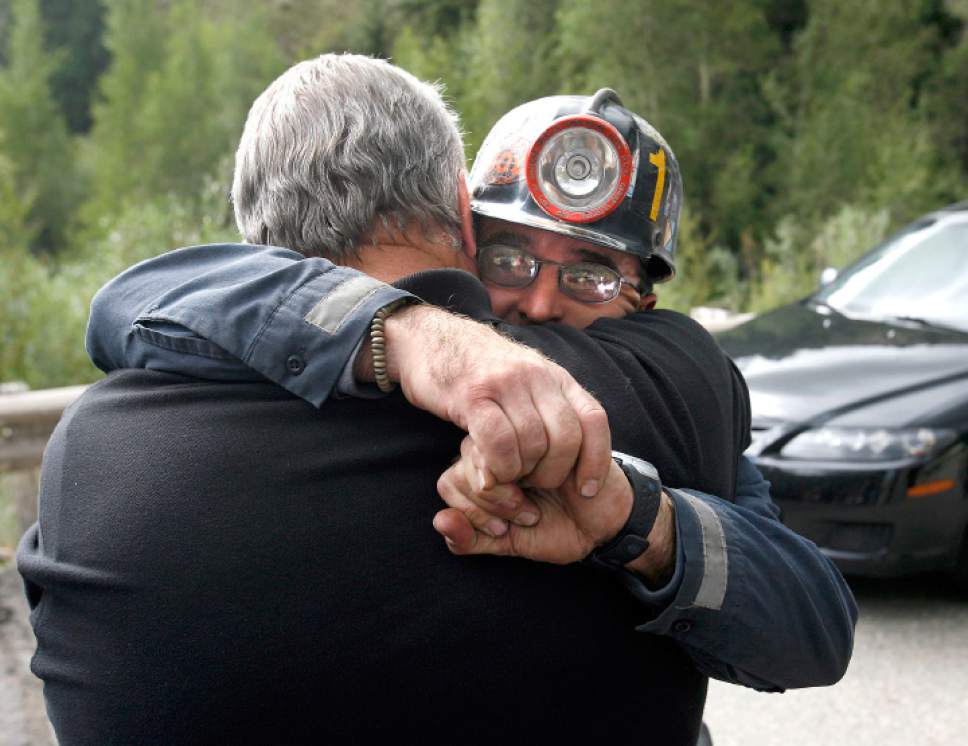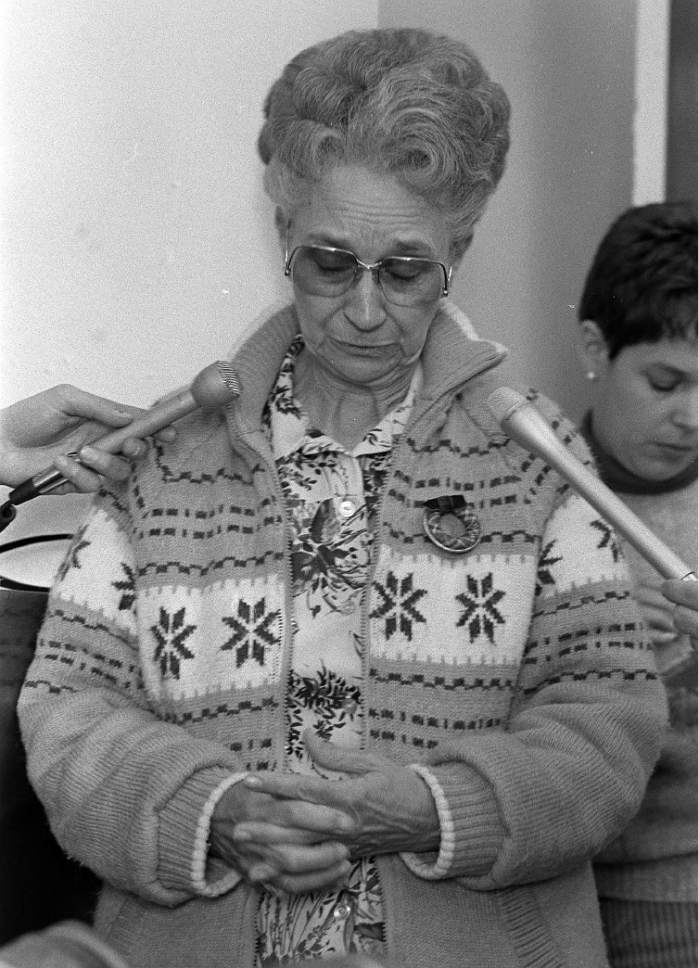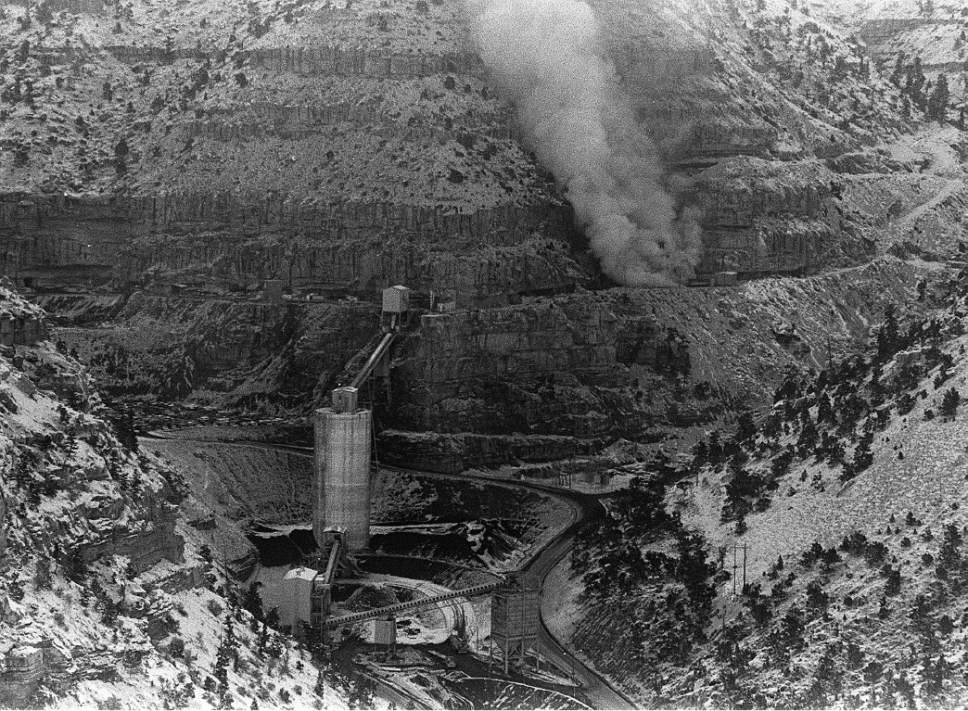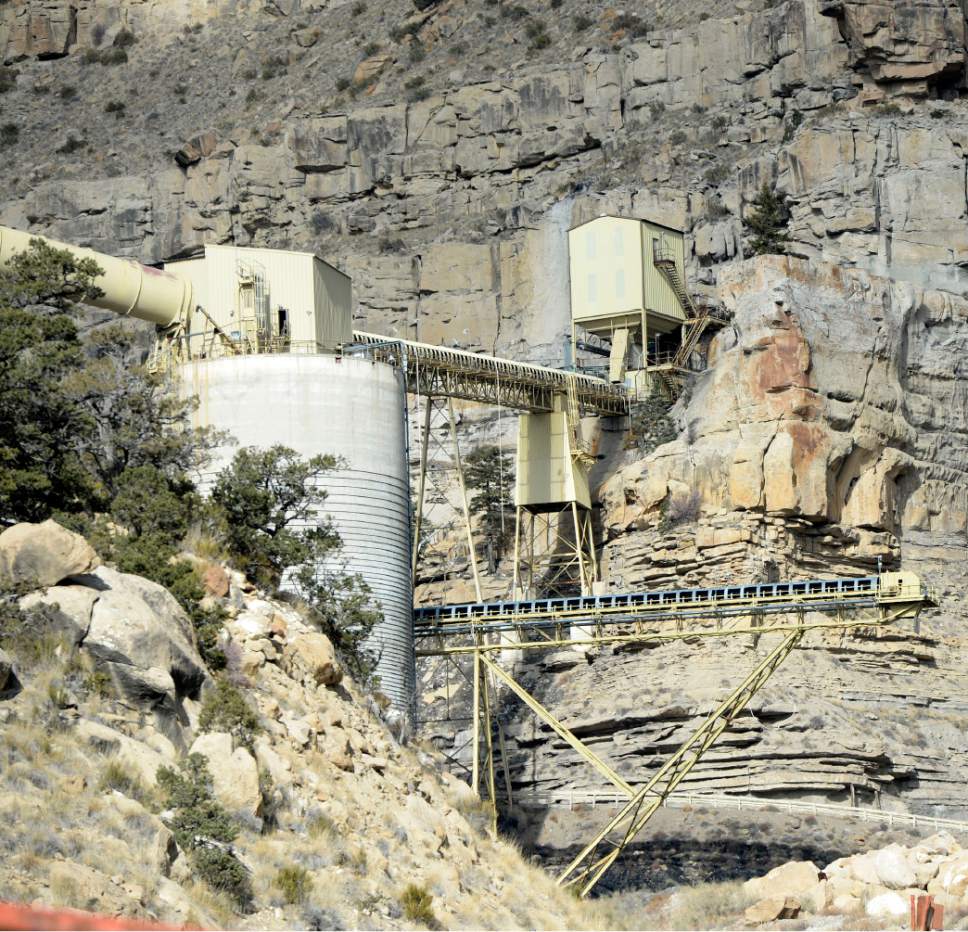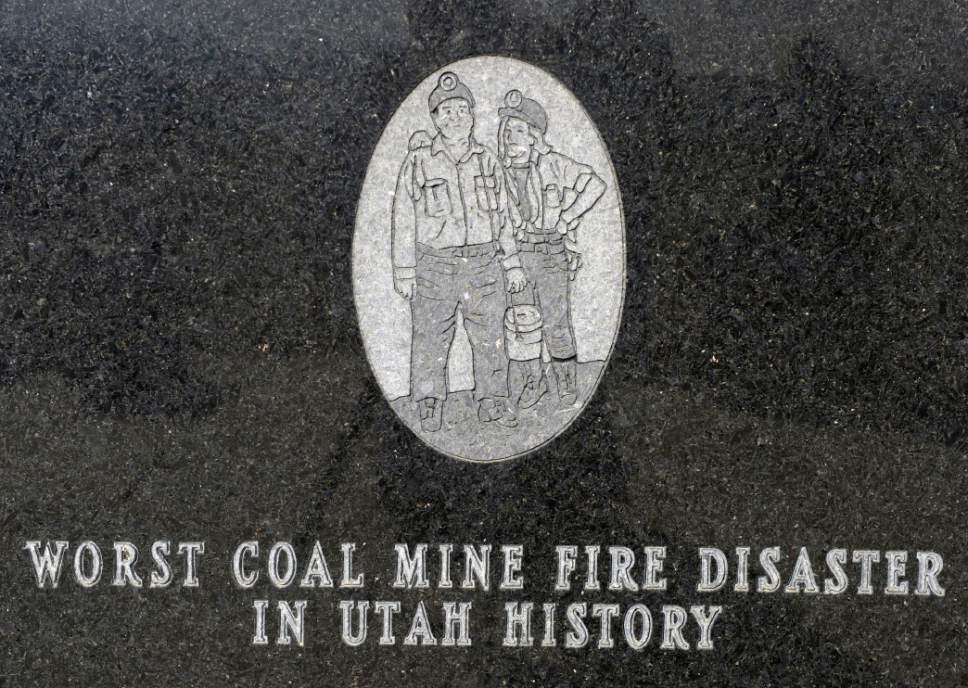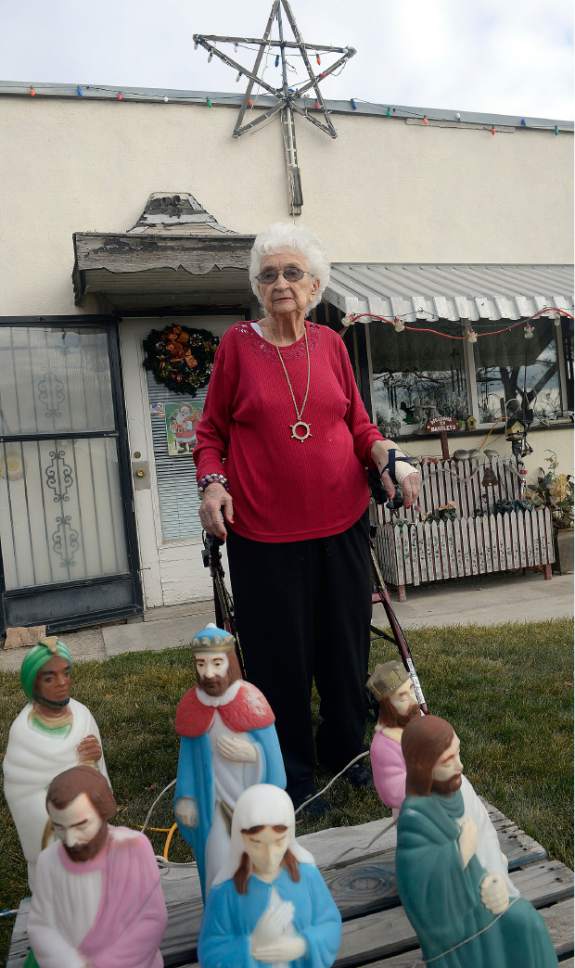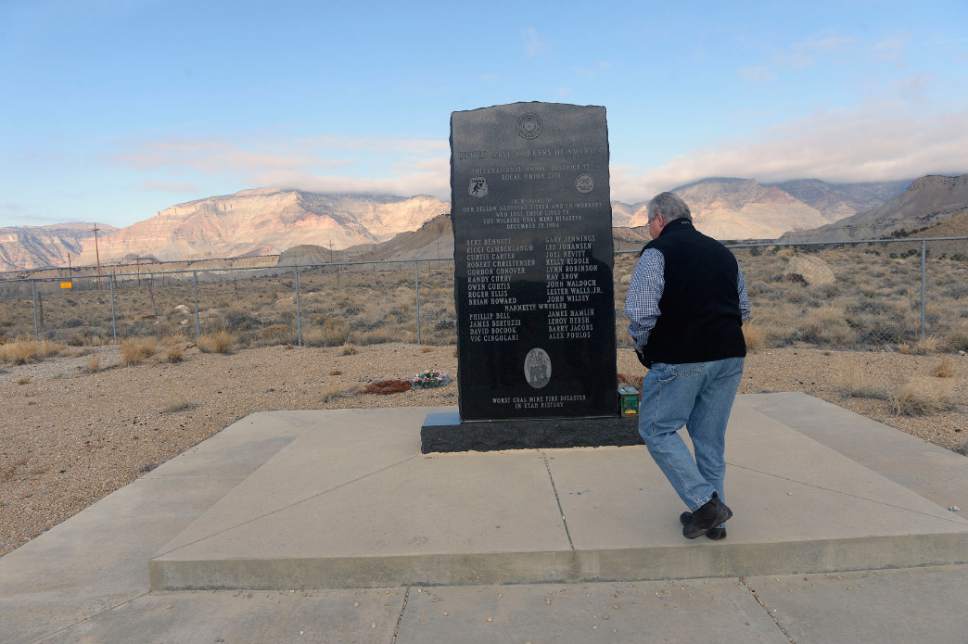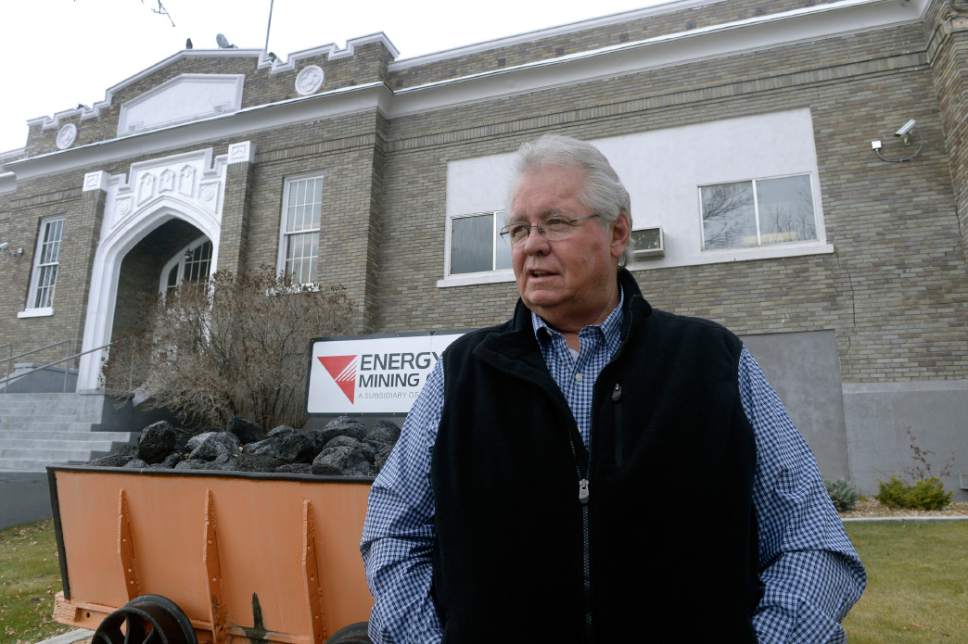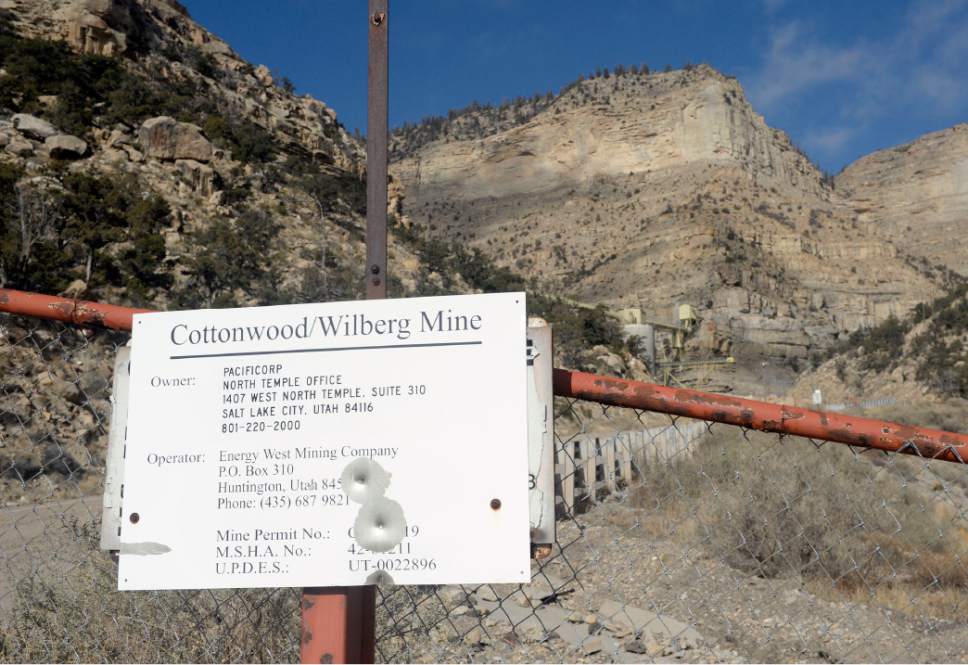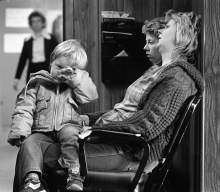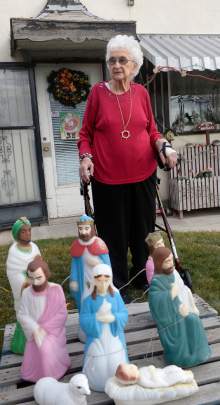This is an archived article that was published on sltrib.com in 2014, and information in the article may be outdated. It is provided only for personal research purposes and may not be reprinted.
Huntington • Nothing in his first eight years as Emery County sheriff prepared Lamar Guymon for Wilberg.
He had dealt with murders and senseless violence, but never mass death, not like he saw unfold in a coal mine fire 30 years ago Friday that killed 27 miners, Utah's worst disaster of the past 90 years.
Pain was everywhere. Many of the little towns in Emery and Carbon counties lost four or five sons, husbands, fathers and friends, along with a daughter.
With Wilberg, the anguish was magnified and prolonged. It took three days of heroic rescue efforts to squelch desperate hopes that the miners were alive. Almost a year passed before their bodies could be brought home from the mine, which was sealed to prevent the fire from triggering an explosion.
In the meantime, ugly rumors swept through coal country about what caused the blaze to get so big so fast. Could it be arson? The whispers had enough credibility that the FBI got involved.
But, in the end, federal Mine Safety and Health Administration (MSHA) investigators determined an air compressor with two defective safety devices was turned on accidentally and left running unattended for 69 hours before self-combusting, its flames filling mine tunnels with poisonous gases.
"It's one of the things in my life that I will never, ever forget," said Guymon, now 68 and retired after nine terms as sheriff, a span that subjected him to a second disaster — the 2007 cave-ins that killed nine men at the Crandall Canyon coal mine.
"Wilberg taught me a lot about life and people, about how good people are and how bad people are," he added. "Some people capitalize on other people's misery. Others step right up and give everything they've got."
He saw a lot of the latter.
—
'It sounded like thunder' • A blizzard raged the night of Dec. 19, 1984, when Guymon received a telephone call at his Huntington home, saying there was a fire at the mine in eastern Utah's Wasatch Plateau.
When he got there, the scene was worse than he feared. Heavy smoke poured from the mine. "People were running around like they were nuts," he said, trying to find a way through to the trapped crew, which included most of the mine's management team.
There wasn't much time. The inferno was growing more intense. "You could hear the fire cracking and popping. It sounded like thunder," recalled Blake Gardner, a former Guymon deputy who responded to the scene.
But there was hope. Mechanic Kenny Blake had gotten out, feeling his way to safety through a small door in a smoke-choked tunnel.
"He looked like heck, just like you'd expect from what he had been through," Guymon said. "For him to get out of there was an absolute miracle."
The initial chaos eventually subsided as company assistant safety director and future MSHA boss Dave Lauriski took charge of the rescue, aided by 32 mine-rescue teams from across the Intermountain West.
The rescuers' commitment was impressive, said Greg LeRoy, who worked at a nearby mine and came over to Wilberg to fill air tanks for the teams.
"Most of the miners wouldn't go home because they wanted to be there to help if they were needed," he said, noting that, in the mine's bathhouse, "people were sleeping on the floors, on benches. You could hardly move from one side of the room to another."
While crews tried multiple approaches to reach the trapped miners, word of the fire spread quickly through the area's communities. Relatives of the missing hunkered down in their homes, sitting by the telephone awaiting updates or gathered at Emery Mining Co. headquarters in Huntington for more direct communications.
Churches of all denominations pitched in to help.
"A lot of our stake members worked in Wilberg or had family working over there," said Ira Hatch, who as president then of a Mormon stake in Huntington oversaw a number of LDS congregations. "We made an effort to have visiting teachers and the bishops work closely with those families to give them the necessary support that each one needed. Being human nature, they all needed different things."
As the American Red Cross representative in Emery County, Francy Handley initially delivered a big pot of soup to rescuers. But she spent most of the next few days providing meals to families at Emery Mining headquarters, holding their hands in prayer, offering words of consolation. Sadly, she was well-suited to the task. Her middle son, Jimmy LeRoy, had been killed in a mine accident two years earlier.
"For them to hear from somebody who has been through it helped a lot," said Handley, now 88. "I knew how it felt. I'm still grieving for Jimmy, and it's been 32 years."
To make matters worse, the national news media descended upon the region with an aggressiveness that irked Guymon and his deputies, resulting in multiple confrontations between residents and journalists.
"I'd received a lot of training but didn't realize it wasn't just the Trib and Deseret News and Channels 2, 4 and 5. It was everybody from everywhere. They felt like they had a lot of rookies here, and they just pretty much tried to run over us and didn't have much respect for what we tried to do," Guymon said. "We understood they were all trying to do their jobs. But what we couldn't understand was their lack of compassion for the people who were in the middle of this tragedy."
—
Blue Christmas • On Dec. 21, rescuers crawling blindly on their knees through a smoky tunnel found the first 13 victims. The next day, they located 12 more. Two miners — James Bertuzzi and Gordon Conover — were still missing when crews were forced to acknowledge they had no hope of finding them alive.
But before the bodies could be removed from Wilberg's depths, rapidly rising concentrations of explosive gases drove away the rescuers.
"People were running down the hill from the mine," said Greg LeRoy, Handley's youngest son. "They didn't want to wait for a vehicle, so they were sprinting away as fast as they could before it blew up."
It never exploded. A sheriff's sharpshooter in a helicopter shot out a fan supplying oxygen to the blaze. Every mine opening was sealed shut, hoping to deprive it of even more air. Then it was a matter of waiting, painful waiting.
"It was a terrible blue Christmas," Handley said.
Guymon sympathized with the families, whose hopes of securing their loved ones remains were frustrated for almost a year. The initial recovery effort got close to the doomed section, only to introduce oxygen that revived the fire. A second try involved boring new tunnels to the site, a process that took months.
"I know it bothered me to wait. Think of all those families, those little kids waiting for their daddies," Guymon said. "You can't go on with life without closure. I still think a lot about the widows from Wilberg — what a life they've had, what lives they could have had if it hadn't happened."
Without access to evidence from the scene, rumors abounded. The most virulent was that Blake had set the fire before making his escape.
"[Kenny] was a survivor. He should never have been a scapegoat," Guymon said, noting "we spent a lot of time with him," checking out his story. When recovery crews reached the Fifth Right section, the evidence they collected verified what Blake had told them.
"He was the only witness to anything, the only person who could tell us anything and he got called an arsonist," Guymon said. "I was very glad we were able to prove otherwise."
To do so, Guymon had to vanquish an anxiety of his own.
"I don't like the dark. I wouldn't say I'm afraid of the dark, but I just don't like it," he said. Still, he took hours of mine-rescue training and made dozens of forays into the mine, "carrying four or five flashlights and a pocketful of glow sticks" to ensure he never got stranded in the dark.
Guymon entered the Fifth Right section with rescuers, not knowing what to expect when they relocated the bodies 11 months after the mine was sealed. "It's one of those things you don't really want to think about, but you can't ever forget. … What was there, I don't want to talk about out of respect for the people involved and their families."
He also developed an abiding respect for mine rescuers, citing in particular the performance of his neighbor, Bob Hill.
"I wouldn't have believed [Bob] was anything other than a common ordinary man — and not a big macho man, just kind of a quiet, reserved person," Guymon said. "But he went places and did things that I don't know that I ever could have done myself. I saw him and other guys do things that were just unbelievable."
Three days before the disaster's first anniversary, rescuers finally found Conover and Bertuzzi.
Conover's tragic tale bears repeating. From evidence left behind in the section, investigators believe he lived for four hours after the fire began, trying several escape routes before squeezing through a cave-in that seemed impassable to would-be rescuers. Conover walked past a note left earlier by those rescuers, indicating the air was breathable at that time. No one will ever know if Conover saw that note, but he took off his breathing apparatus. By then, deadly carbon-monoxide gas had migrated there and felled him, an unused breathing device in his hand.
—
The aftermath • Once the victims finally were laid to rest, the disaster focus shifted to MSHA's investigation, congressional hearings and lawsuits.
The 27 families settled a wrongful-death suit with Utah Power & Light for $22 million in March 1987, two weeks before MSHA's probe formally blamed the air compressor for the fire and cited the mine owner and operator for 34 mine-safety violations, nine contributing directly to the tragedy. Fines associated with those violations totaled a then-record $111,470. A criminal investigation began, but no charges resulted.
Safety regulations were revised in response to the fire, but none applied to mining conditions responsible for the disaster at Crandall Canyon, where implosions of the mine walls on Aug. 6 and Aug. 16, 2007, fatally buried six miners, killed three rescuers and injured six others.
The agony from all this endures in Emery County, but the residents remain steadfast.
"It's because we're bound and determined to live down here — despite the odds," said Gayle McDonald, whose husband, Steve, worked at Wilberg and took part in the rescue and relief efforts and whose brother, Dale Black, was a rescuer killed in Crandall Canyon. "It's rough territory and rough land and we're rough people. We're determined to stay here together — and we do — despite what happens."
For Guymon, Wilberg offered instruction in how to treat others.
"It gave me a lot more compassion and appreciation for people's goodness," he said. "Law enforcement people sometimes believe there are no good people in the world because all they deal with are people who don't do things right. But Wilberg involved people from every walk of life. To see how they reacted in different situations gave me a better outlook on life."
Out of the fiery abyss came a faith in humanity.
MSHA boss reflects
Joseph Main was the lead figure representing the United Mine Workers of America union in the rescue, recovery and investigative proceedings involving the 1984 Wilberg disaster and now is the assistant labor secretary over the federal Mine Safety and Health Administration (MSHA):
"During my lifetime, I have dealt with a number of mine tragedies and disasters. None was as difficult for rescuers or as heartbreaking for families as the Dec. 19, 1984, Wilberg mine disaster. On Christmas Eve, after days of fighting a fire in an attempt to reach, rescue and recover 27 missing miners, we had to tell the families that hope was gone. We had lost control of the fire in the mine and had to abandon the recovery efforts. It would be almost a year later before we found and recovered the last missing miner. I will remember forever the gallant rescue that placed lives at risk, the agony the families had to endure, and the difficult decision we had to make ending the rescue and recovery mission just before Christmas." —
View video, more photos
Revisit the Wilberg disaster and see current photos and video at sltrib.com.


